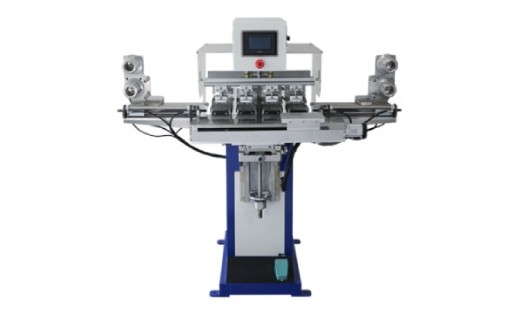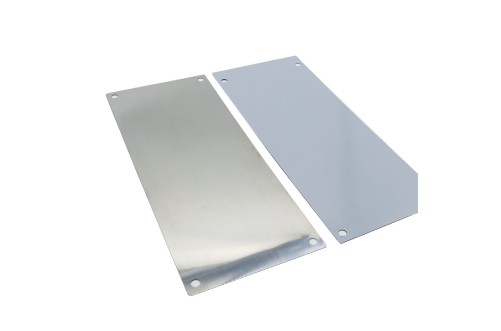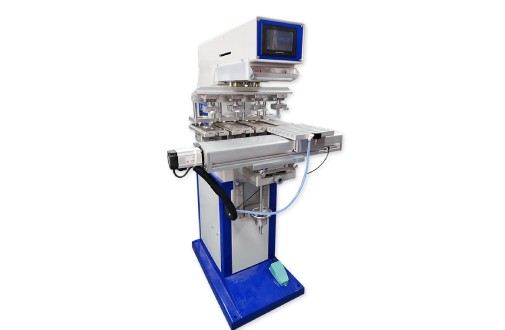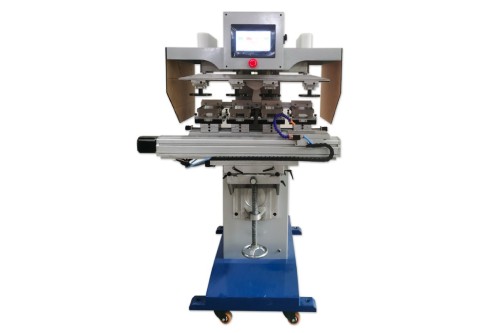Introduction
Pad printing is a famous industrial printing method used to decorate a wide range of products, including electronic devices, automotive parts, toys, and promotional items. The process involves transferring ink from a plate (also known as a cliché) to a silicone pad, which then deposits the ink onto the product surface. One of the critical advantages of pad printing is its ability to print on uneven or curved surfaces, making it ideal for printing on various products.
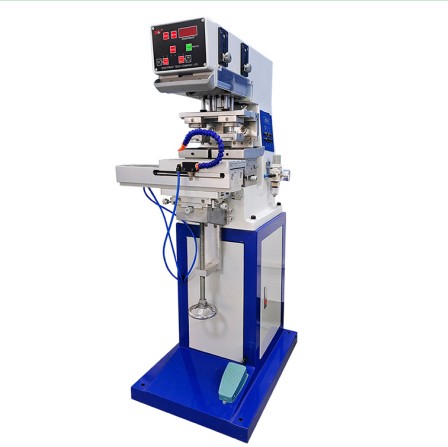
Standard pad printing
The standard pad printing method involves transferring ink from a plate to a silicone pad using an ink cup. The ink cup is filled with ink and then doctored, leaving a thin layer of ink on the surface of the plate. The silicone pad then picks up the ink from the plate and transfers it to the product surface. Standard pad printing is widely used in industrial applications because it can produce high-quality prints with fine detail.
Closed ink cup pad printing
Closed ink cup pad printing is a variation of the standard pad printing method. In this method, the ink cup is completely enclosed, preventing the ink from drying out and reducing ink waste. The ink cup is doctored using a ceramic ring or carbide( Tungsten steel) ring , leaving a thin layer of ink on the surface of the plate. Closed ink cup pad printing is ideal for printing small images and text on various characters.
Open inkwell pad printing
Open inkwell pad printing is another variation of the standard pad printing method. This method holds the ink in an open container (usually a metal or plastic tray) rather than an ink cup. The ink is doctored using a doctor’s blade, and the silicone pad picks it up from the tray and transfers it to the product surface. Open inkwell pad printing is ideal for printing large or irregularly shaped objects.
Sealed ink cup pad printing
Sealed ink cup pad printing is similar to closed ink cup pad printing, but it uses a sealed ink cup rather than a closed one. Sealed ink cup pad printing reduces ink waste and makes it easier to clean the ink cup. This method is often used in high-volume production environments because it is fast and efficient.
Laser-etched pad printing
Laser-etched pad printing is a variation of the standard pad printing method that uses a laser to etch the image directly onto the surface of the plate. This method eliminates the need for a photographic process, making it faster and more efficient. Laser-etched pad printing is ideal for printing small or intricate images and text.
Two-color pad printing
Two-color pad printing is a method that uses two separate silicone pads to print two colors on a single product. The product is first printed with one color using one place and then printed again with a second color using a second pad. This method is often used to create high-quality prints with multiple colors.
Multi-color pad printing
Multi-color pad printing is a variation of two-color pad printing that uses multiple silicone pads to print various colors on a product. The places are usually arranged in a carousel, and the product is printed with each color in turn as it rotates. Multi-color pad printing is ideal for creating complex prints with multiple colors.
Automatic pad printing
Automatic pad printers are machines that automate the pad printing process. They are often used in high-volume production environments where speed and efficiency are essential. Automatic pad printers can be customized to meet the specific needs of a particular application. Some standard features of automatic pad printers include:
1. Robot loading and unloading
2. Conveyor systems with
3. Multiple-color printing
4. Vision systems for quality control
Types of pad printers
There are several types of automatic pad printers available on the market, each with its own unique set of features and capabilities. Some of the most common types of automatic pad printers include:
1. Rotary pad printers
Rotary pad printers use a carousel of silicone pads to print on multiple products at once. The products are loaded onto a rotating table, and the silicone pads move in and out of the ink cups to print on each product as it passes. Rotary pad printers are ideal for the high-volume production of small to medium-sized products.
2. Linear pad printers
Linear pad printers use a linear conveyor system to move products past a single silicone pad. The silicone pad moves up and down to pick up ink from an ink cup and transfer it to the product surface. Linear pad printers are ideal for the high-volume production of more oversized products.
3. Shuttle pad printers
Shuttle pad printers use a shuttle mechanism to move products between the ink cup and the silicone pad. The ink cup and silicone pad are stationary, and the shuttle mechanism moves the product back and forth between them. Shuttle pad printers are ideal for printing on small medium ,large or irregularly shaped products.
Advantages of semi-automatic pad printers
Semi-Automatic pad printers offer several advantages over manual pad printers, including:
1. Increased speed and efficiency: Automatic pad printers can print much faster than manual pad printers, making them ideal for high-volume production environments.
2. Consistency: Semi-automatic pad printers can produce consistent prints with high levels of accuracy, reducing the risk of errors or defects.
3. Customization: Semi-Automatic pad printers can be customized to meet the specific needs of a particular application, with features such as multiple-color printing, vision systems for quality control, and robotic loading and unloading.
4. Cost savings: While semi-automatic pad printers may be more expensive than manual pad printers, they can save money in the long run by reducing labor costs and minimizing ink waste.
Conclusion
Pad printing is a versatile and widely used printing method in the industrial world. A pad printing machine is necessary for this process, and several ways are available. Standard pad printing, closed ink cup pad printing, open inkwell pad printing, sealed ink cup pad printing, laser etched pad printing, two-color pad printing, and multi-color pad printing are the most common methods.
Semi-automatic pad printers provide several advantages over manual pad printers, including increased speed and efficiency, consistency, customization, and cost savings. With a wide range of pad printing methods and machines available, businesses can choose the one that best suits their needs and budget to produce high-quality prints on various products.


